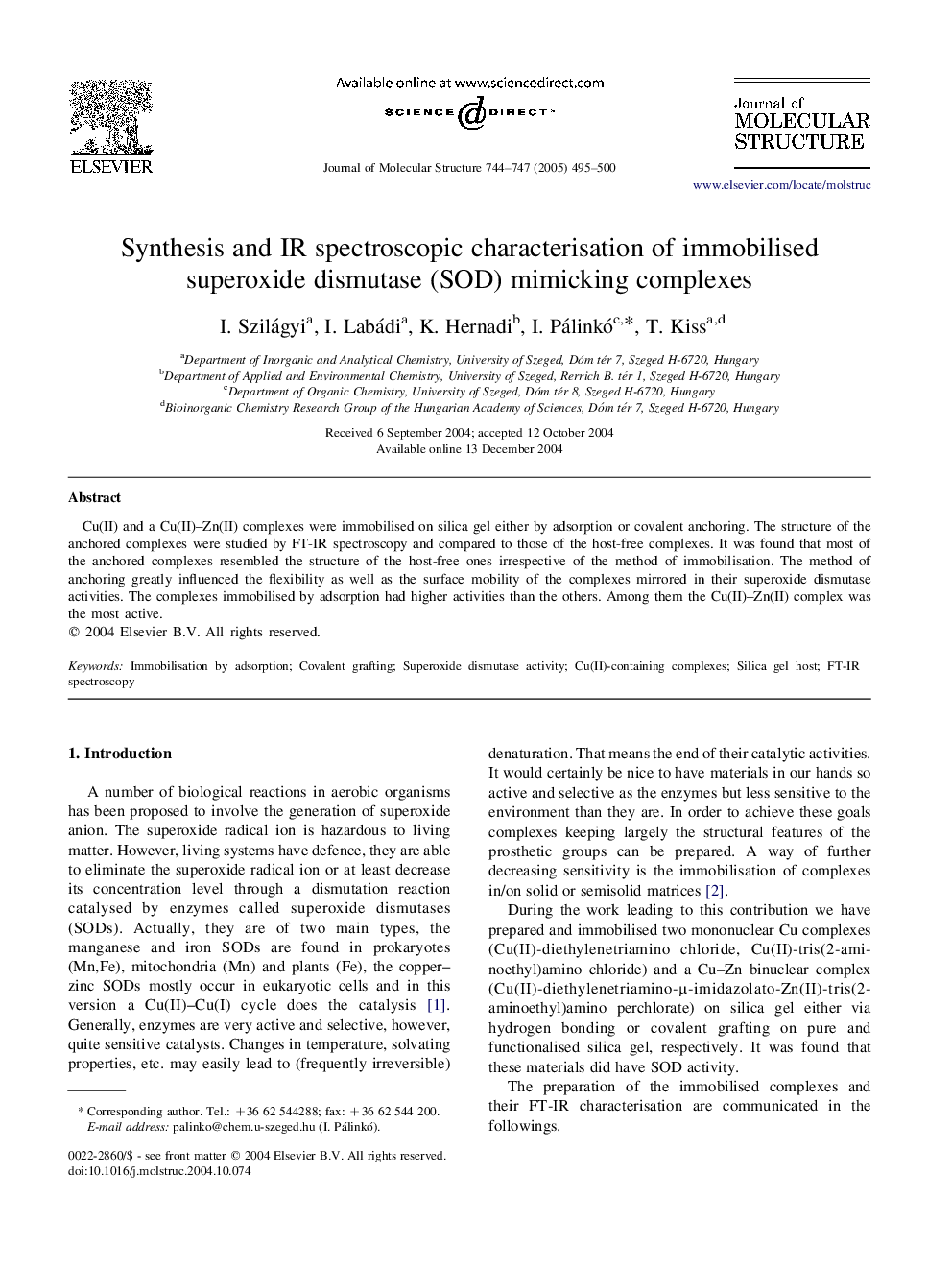| Article ID | Journal | Published Year | Pages | File Type |
|---|---|---|---|---|
| 9770098 | Journal of Molecular Structure | 2005 | 6 Pages |
Abstract
Cu(II) and a Cu(II)-Zn(II) complexes were immobilised on silica gel either by adsorption or covalent anchoring. The structure of the anchored complexes were studied by FT-IR spectroscopy and compared to those of the host-free complexes. It was found that most of the anchored complexes resembled the structure of the host-free ones irrespective of the method of immobilisation. The method of anchoring greatly influenced the flexibility as well as the surface mobility of the complexes mirrored in their superoxide dismutase activities. The complexes immobilised by adsorption had higher activities than the others. Among them the Cu(II)-Zn(II) complex was the most active.
Related Topics
Physical Sciences and Engineering
Chemistry
Organic Chemistry
Authors
I. Szilágyi, I. Labádi, K. Hernadi, I. Pálinkó, T. Kiss,
